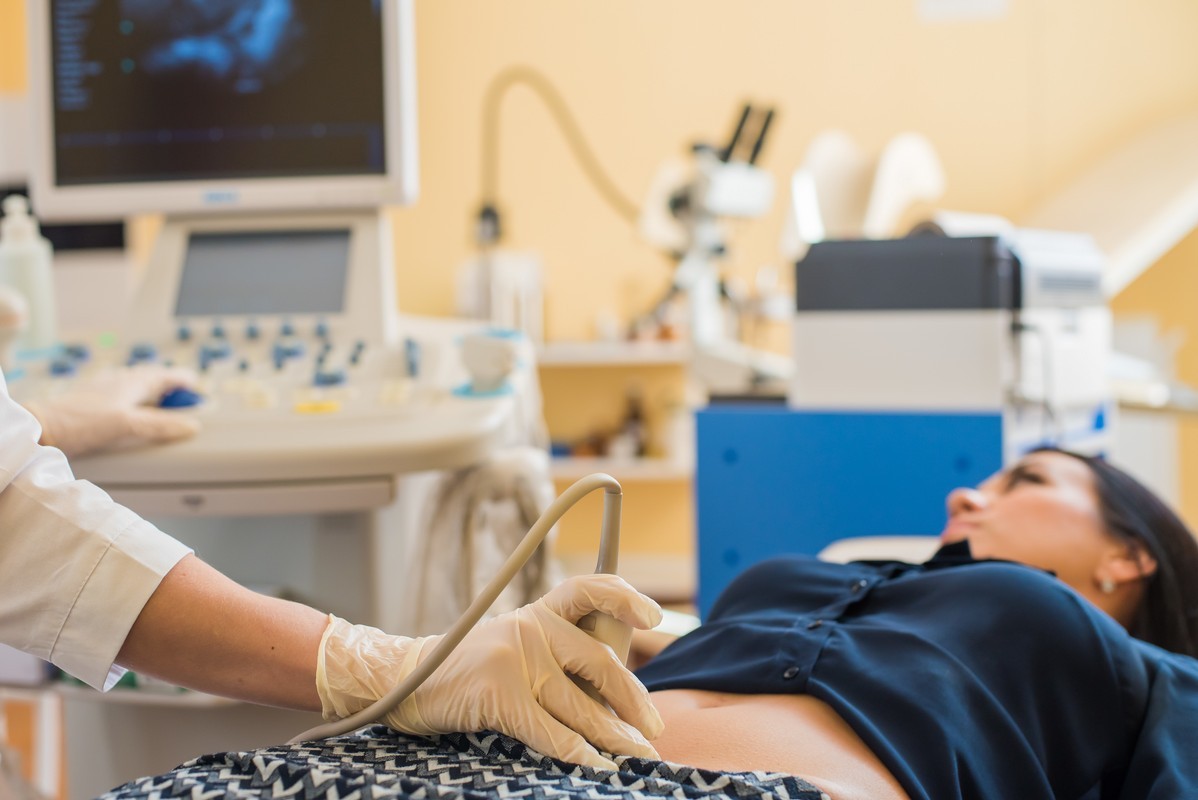The ovaries are located deep inside the abdomen and are well-protected by pelvic structures. Identifying ovarian cancer is often challenging because this type of cancer may have few symptoms and those symptoms that are seen can sometimes be caused by other conditions that are not cancer-related. For these reasons, it is important to be familiar with early warning signs and discuss any early symptoms with your gynecologist.
There are many types of screenings and diagnostic tests that can check for ovarian cancer effectively, determine the type if it exists, and help guide treatment decisions for the best possible outcome. With early diagnosis, the vast majority of women survive ovarian cancer.
What Are the Symptoms of Ovarian Cancer?
These early symptoms of ovarian cancer provide the clues your obstetrician or family doctor needs to determine what screenings or tests should be run to check for ovarian cancer. Keep in mind that almost all of these symptoms can have a cause which is NOT cancer:2
- Fatigue and back pain
- Painful intercourse and irregular menstrual cycles
- Bloating, pain, and pressure in the abdomen
- Feeling abnormally full after eating, or having trouble eating
- Having an increased urge to urinate, and urinating more often
- Indigestion, heartburn, and constipation
- Dermatomyositis, which causes skin rashes, muscle weakness, and inflammation
In cases of ovarian cancer, these symptoms will persist; that is, they will not resolve on their own and will become worse over time. Although these symptoms may seem mild or unrelated to one another, if you or your OBGYN is concerned about the risk of ovarian cancer, more screening and diagnostic tests may be ordered.
Who Is at Risk for Ovarian Cancer?
While the causes of ovarian cancer are still not clearly identified, there are genetic and environmental factors that can increase your risk of developing this disease, which include:2
- A personal history of colon, breast, or uterine cancer
- A family history of ovarian cancer
- The use of hormone therapies or fertility treatments
- Being significantly overweight or obese
- Being post-menopausal, as the risk increases with age
- Never having been pregnant
- Having endometriosis or other abnormal conditions of the reproductive system
- Testing for genes associated with ovarian cancer (BRCA1, BRCA2)
- Having enlarged ovaries or ascites (fluid in the abdomen)
What Screenings and Diagnostic Tests Check for Ovarian Cancer?
Routine women’s health exams are sometimes performed by family doctors, although some women prefer seeing an OBGYN or searching for a “female gynecologist near me.” A standard Pap test is designed to identify cervical cancer, and a regular pelvic exam allows a doctor to feel the ovaries and uterus for obvious issues.
However, ovarian cancer can rarely be felt during an examination. The biggest value of these routine visits is the discussion of symptoms that might trigger concern about risk factors or a developing disease. Seeing your doctor regularly and discussing your family history and any unusual changes will help determine when further testing is needed.

Ovarian Cancer Diagnostic and Screening Tests
When risk factors or symptoms are present, your gynecologist may order a variety of tests to establish whether or not a treatment for ovarian cancer is needed. Some of these include:
- Transvaginal ultrasound (TVUS) - uses harmless sound waves to get a picture of the ovaries, helping to identify if there is a mass or growth. This test cannot identify if a growth is cancerous, but it provides direction for any next steps or can put worries to rest. Most masses found during TVUS turn out to be non-cancerous.
- A CA-125 blood test- measures the levels of a protein called CA-125, which is often elevated in women who have ovarian cancer. This test is also used during treatment for ovarian cancer because the levels of this protein will go down as the tumor shrinks. However, this protein is also often elevated due to endometriosis or PID (pelvic inflammatory disease), which makes it less useful as a true screening test for ovarian cancer.
Diagnostic Imaging for Ovarian Cancer
While TVUS is usually the first type of diagnostic imaging used in the diagnosis of ovarian cancer, there are many other types of tests that can give your doctor a better picture of your ovaries and any growths attached to them. Most often these tests are ordered after a TVUS:
- CT scans (computed tomography) - provides cross-sectional images of internal structures within the body and is typically used to see larger tumors, locate enlarged lymph nodes, and determine if cancer has spread to other organs or structures.
- MRI scans (magnetic resonance imaging) - create cross-sectional images similar to CT scans but use magnets to create the image. Gadolinium, a contrast dye, is usually injected prior to an MRI scan to improve the detail of the images.
- PET scans (positron emission tomography)- a slightly radioactive sugar solution is used to identify cancer cells, which consume more of the sugar solution than normal cells will. A camera then takes pictures of the highlighted cells, allowing identification of small tumors or those which have spread.
Surgical Diagnosis for Ovarian Cancer
Once the available or useful diagnostic imaging procedures are complete, your obstetrician or OBGYN oncologist will make a final determination if identified growths or cell clusters are cancerous. One or more of these surgical procedures might be used:
- Biopsy – obtaining a tiny sample of the growth and sending it to a specialized lab for testing is the best way to find out more about a growth within the body. Most are performed by needle aspiration, guided by ultrasound or a CT scan to make sure the sample is taken from the most useful location(s).
- Laparoscopy-allows your oncologist to look at the ovaries and pelvic structures by inserting a thin tube, which returns images to a video monitoring system. The lighted camera is inserted through a very small incision. Sometimes biopsies are performed simultaneously using the same instrument.
Blood and Genetic Testing for Ovarian Cancer
In addition to early blood testing for the BRCA1 and BRCA2 genes, there are other genetic markers and blood level indicators that can provide more information for diagnosis and treatment. Some of these include:1
- Human chorionic gonadotropin (HCG)
- Alpha-fetoprotein (AFP)
- Lactate dehydrogenase (LDH)
- Inhibin, estrogen, and testosterone levels
- Genetic testing for Lynch syndrome

What Are the Types of Ovarian Cancer?
After diagnosis, your doctor will determine if you do have ovarian cancer and, if so, what type and stage it is. Ovarian cancers are classified into several types:
- Epithelial tumors, which make up about 90% of ovarian cancers1
- Stromal tumors, which feature cells that produce high levels of hormones
- Germ cell tumors, which are located in the cells of the ovaries that produce eggs
- Ovarian cysts are often present on the ovaries and are usually benign; in very rare cases a cyst might be cancerous
Treatment for Ovarian Cancer
When diagnosed at an early stage, the ovarian cancer 5-year survival rates are as high as 94%.1 Even stage-2 ovarian cancers have 5-year survival rates as high as 82%.1 This means that seeing a doctor as soon as you suspect something is wrong may have a very big impact on the success of your treatment.
Treatment plans for ovarian cancer usually include one or more of the following:
- Chemotherapy
- Radiation
- Targeted therapy, including bevacizumab (Avastin) and olaparib (Lynparza)
- Hormone therapy
- Surgery to remove the tumor or the ovaries themselves
Finding a Gynecologic Oncologist or Ovarian Cancer Specialist
If your gynecologist is concerned about early symptoms or the results of standard tests, they will most likely refer you to a specialist or Gynecologic Oncologist who has advanced treatment options available. At Crystal Run Healthcare, our team of gynecologists and obstetricians provides the broadest range of care for women of all ages and specializes in minimally invasive surgery and early detection.
Call today to schedule a consultation with a leading team in the diagnosis and treatment of ovarian cancer. Don’t wait to find the compassionate and highly trained team you need to confirm a diagnosis or guide your treatment. Crystal Run has the advanced treatment options and therapies you want for you or your loved ones throughout the Hudson Valley.
Sources:
